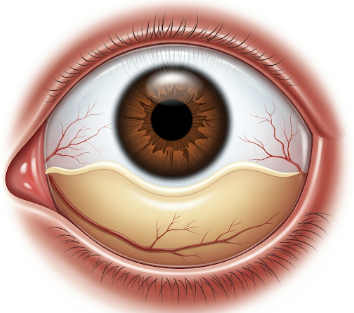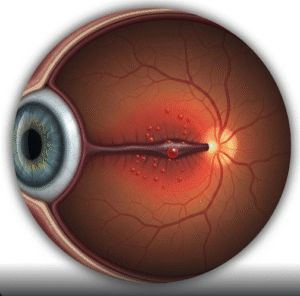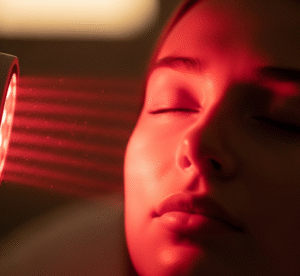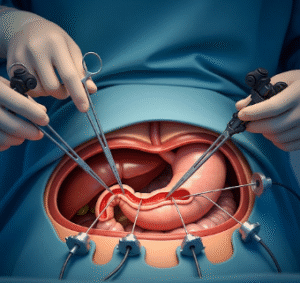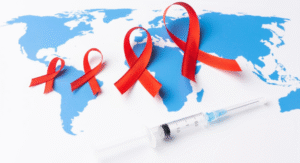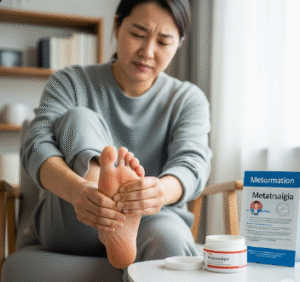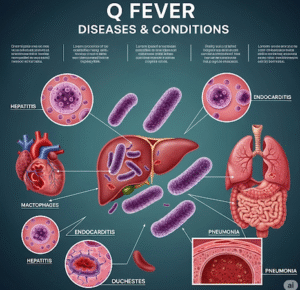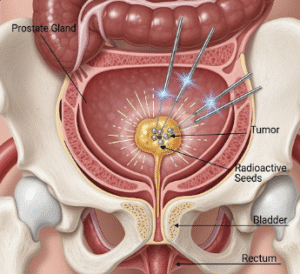Overview
Hypopyon is a medical condition characterized by the accumulation of pus in the anterior chamber of the eye, the fluid-filled space between the cornea and the iris. This condition is a sign of severe inflammation or infection, often associated with endophthalmitis, uveitis, or corneal ulcers.
Hypopyon indicates active infection or immune response and requires urgent ophthalmologic evaluation to prevent vision loss or serious complications. In South Korea, ophthalmology centers and specialized eye hospitals provide advanced diagnostic tools, treatment options, and surgical interventions to manage hypopyon effectively.
Key Facts
🟢 ➤ Hypopyon is the accumulation of pus in the anterior chamber of the eye.
🟢 ➤ Often indicates severe inflammation or infection, requiring urgent medical attention.
🟢 ➤ Symptoms include visible white or yellowish fluid in the eye, redness, pain, and blurred vision.
🟢 ➤ Common causes: bacterial or fungal infections, autoimmune uveitis, or severe corneal ulcers.
🟢 ➤ Early diagnosis and treatment are critical to prevent complications such as permanent vision loss.
🟢 ➤ South Korean eye hospitals provide comprehensive care, including medical therapy, laser treatment, and surgery.
What is Hypopyon?
Hypopyon is the visible collection of white blood cells (pus) in the anterior chamber of the eye, usually settling at the lowest part of the chamber due to gravity.
Key points:
➤ Often associated with intraocular infection or severe inflammation, leading to an immune response in the eye.
➤ Can result from infectious causes (bacteria, fungi) or non-infectious causes (autoimmune uveitis, post-surgery inflammation).
➤ The presence of hypopyon is a clinical sign that warrants prompt ophthalmologic examination.
➤ May be accompanied by redness, pain, photophobia, blurred vision, and tearing.
Symptoms Related to Hypopyon
Symptoms vary depending on underlying cause and severity:
🟢 ➤ Visible layer of white or yellow pus in the lower anterior chamber of the eye.
🟢 ➤ Eye redness and inflammation (conjunctival injection).
🟢 ➤ Eye pain or discomfort, sometimes severe.
🟢 ➤ Blurred vision or decreased visual acuity.
🟢 ➤ Photophobia (sensitivity to light) and excessive tearing.
🟢 ➤ In severe cases, swelling of the eyelids and surrounding tissues.
Causes / Possible Causes
Hypopyon can result from infectious or non-infectious processes affecting the eye:
Infectious Causes
➤ Bacterial endophthalmitis – often following eye surgery, trauma, or systemic infection.
➤ Fungal infections – particularly in immunocompromised patients.
➤ Severe corneal ulcers – can trigger pus accumulation in the anterior chamber.
Non-Infectious Causes
➤ Autoimmune uveitis – inflammatory disorders like Behçet’s disease or HLA-B27 associated uveitis.
➤ Post-surgical inflammation – sometimes following cataract surgery or intraocular procedures.
Other Contributing Factors
➤ Trauma or foreign body in the eye.
➤ Systemic infections or immune deficiencies increasing susceptibility to ocular infections.
When Should I See a Doctor?
Hypopyon is an ophthalmic emergency. Immediate evaluation is necessary if:
🟢 ➤ There is a visible layer of pus in the eye.
🟢 ➤ Eye redness, pain, or swelling develops suddenly.
🟢 ➤ Vision becomes blurred or significantly decreased.
🟢 ➤ Symptoms are associated with fever or systemic illness.
Prompt treatment is essential to prevent irreversible vision loss or spread of infection.
Care and Treatment
Management of hypopyon involves treating the underlying cause, controlling inflammation, and preventing complications:
Medical Management
➤ Topical and systemic antibiotics – used for bacterial infections.
➤ Antifungal agents – for fungal endophthalmitis or keratitis.
➤ Anti-inflammatory therapy – corticosteroid drops or systemic steroids in non-infectious uveitis (only under close supervision).
Surgical Interventions
➤ Anterior chamber washout or paracentesis – removal of pus in severe cases.
➤ Vitrectomy – in cases of endophthalmitis or when pus extends into the vitreous chamber.
Supportive Care
➤ Pain relief with topical anesthetics or oral analgesics.
➤ Frequent monitoring of visual acuity and intraocular pressure.
➤ Avoid rubbing or touching the affected eye to prevent further infection.
Advanced Care in Korea
➤ South Korean ophthalmology centers provide rapid diagnostic imaging, microbial cultures, and advanced surgical techniques.
➤ Multidisciplinary management includes retina specialists, cornea specialists, and infectious disease experts.
➤ Patient education ensures adherence to treatment and early recognition of complications.
Highlights (Clean Green Arrow Version)
🟢 ➤ Hypopyon is the accumulation of pus in the anterior chamber of the eye, usually at the lower portion.
🟢 ➤ Symptoms: visible pus, eye redness, pain, blurred vision, photophobia, and tearing.
🟢 ➤ Causes: bacterial or fungal infections, autoimmune uveitis, corneal ulcers, post-surgical inflammation.
🟢 ➤ Immediate ophthalmologic evaluation is critical to prevent permanent vision loss.
🟢 ➤ Treatment includes antibiotics, antifungals, anti-inflammatory therapy, and sometimes surgical intervention.
🟢 ➤ South Korea offers advanced ophthalmology care with integrated diagnostic, medical, and surgical management.

